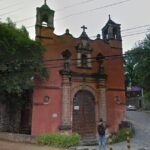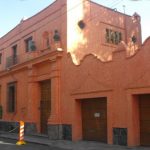
The Fonoteca Nacional is the part of the Secretariat of Culture charged with preserving the country’s sound heritage. Charged with five priority activities, the Fonateca works to:
For non-Spanish speaking visitors, the Fonateca Nacional may not be at the height of your bucket list. But the Fonateca joined a list of audiovisual and photographic archives dedicated to preserving more of Mexico’s culture. Among them are
But there was still no specialized place in the protection of sound material.
The first of its kind in Latin America, the National Fonoteca opened only in 2008.
The Casa Alvarado is an 18th-century building in Andalusian and Moorish styles, declared a historical monument in 1932. It had been the library of the Ministry of Finance and Public Credit, then the library of the Ministry of Public Education, the headquarters of the Encyclopedia of Mexico, a Statistics Office, and finally headquarters to the Octavio Paz Foundation. From December 1997 to April 1998, it was also the final residence of Octavio Paz who died there.
Today the property includes the Preservation Building, which includes the main parts of the Fonoteca. There are also an Audioteca and Reading Room, a Sound Garden, open to the public Monday to Saturday from 12 to 1 p.m. and from 5 p.m. to 6 p.m. The Murray Schafer Auditorium where most public performances take place. The René Villanueva Gallery consists of two exhibition halls, as an open space for artists.
The Thomas Stanford and Henrietta Yurchenko Training Rooms and Carlos Chávez Studios also make serious contributions, not just to the academic study of sound, but to the overall culture of the country and its many peoples.
 informesfonoteca@cultura.gob.mx
informesfonoteca@cultura.gob.mx
 +52 (55) 41550950
+52 (55) 41550950
 http://www.fonotecanacional.gob.mx/
http://www.fonotecanacional.gob.mx/

Nearest at 0.08 kms.

Nearest at 0.14 kms.

Nearest at 0.19 kms.

